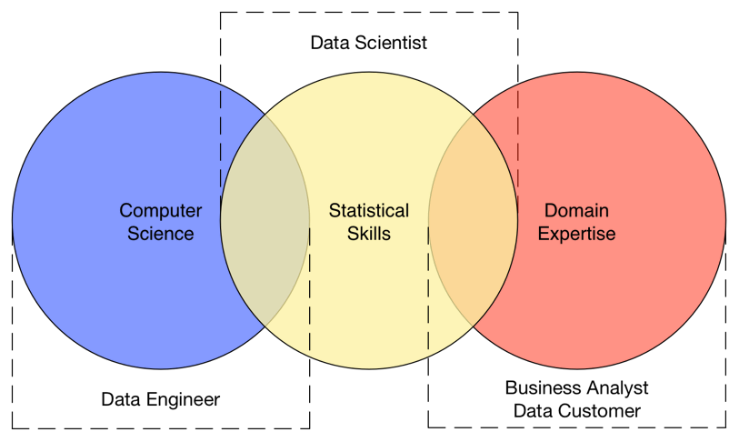Big vision transformation projects need big vision from both IT and business to work in harmony, and often data engineers and business analysts are at loggerheads as tension arises over who should take the lead.
The questions remain: Where is the common ground, and why is symbiosis essential when it comes to implementing more unfamiliar technology?
Is the tail wagging the dog, or is the dog sitting still?
There is a continuum when it comes to new technology adoption in the banking, financial services and insurance (BFSI) sector. Some firms have been engulfed by a technology-first approach propelled by the excitement and potential of AI, machine learning, NLP, etc. Many were heralding 2020 as ‘the year of AI’, and were keen to bring it into their organisations. These firms have embedded new tech with such gusto that the original business goals behind the project have fallen by the wayside, and the technology has taken over. This could not be further from projects of the past, where business needs dictated to IT teams.
Some say the business-first approach from the past is the reason for the multiple siloed systems and unwieldly technical debt that has piled up over the years and is also squarely to blame for the second trend we have seen – those at the other end of the spectrum hovering in ‘wait and see’ mode. For many financial institutions, unravelling the dense, existing data spaghetti required to digitise complex processes is just too painful to contemplate.
Learning to love technical debt
In all cases, it is very likely that either the business analysts or the data engineers were in the driving seat when any big-vision transformation plans were discussed, rather than working together, and there is the problem. After all, data engineers cannot possibly know everything about the business, and vice-versa – business analysts cannot know everything about the work that goes on to make this kind of project a reality.
The magic trifecta – technology, data and business
The issue of dysfunctional team dynamics is not lost in many firms, as shown in a recent Adox Research webinar. In a quantitative survey of 90+ senior technology and data management executives with technology buying responsibility, 50% thought that ‘better technology’ is what their firm needed to improve value-added data capabilities. However, in-depth interviews with the same sample showed that cultural and organisational change is needed just as much – if not more if these projects are ever going to get off the ground.
Some argue that the insertion of data scientists into the mix is the key to providing the secret alchemy needed to bridge the gap, and that by “occupying the space between engineering and subject matter experts, data scientists can help both by using skills no one else has”.

The emergence of data science as a discipline has very much shifted the conversation in the right direction. The presence of data scientists has moved the focus to the two key starting points: the problem that’s being tackled, and the data needed to solve it.
However, some of the tools being used by data scientists to prepare the data for ingestion into AI processes are centred more on the technology, and less on the business requirements of that data. For example, when data science is in the driving seat, much of the data preparation focus within AI projects tends to focus on assembling and formatting data into a form that’s appropriate for machine learning algorithms, rather than ensuring that the data is clean and has the right business context behind it.
Data first, everything else follows
Ideally this situation is solved by getting all relevant teams together at the very start of the project, right? Well, it is a start, but the different tribes will still have very different approaches; the butting of heads is likely to begin again if the project doesn’t begin on the right foot, and taking a disparate approach to implementing technology as powerful and less familiar to the business as AI is simply not a risk firms should be taking. But, unfortunately, many AI teams are missing a vital stage, and are finding the same issues arising again and again.
The hardest part of AI and analytics is not AI, it’s data management
Putting the issue of data quality and quantity on the table first is a key element in establishing common ground and ensuring everyone plays to their strength in the long run. Specifically, all teams involved should be part of the data ingestion process to ensure that the right data is presented, and the AI algorithms are given a fighting chance of success.
With today’s only constant being change, having the confidence to truly change your business takes vision. Ultimately, successful digital transformation comes down to every team being client-centric and creating a solid digital backbone from clean and relevant data so that technologies can be reimagined for the future.








